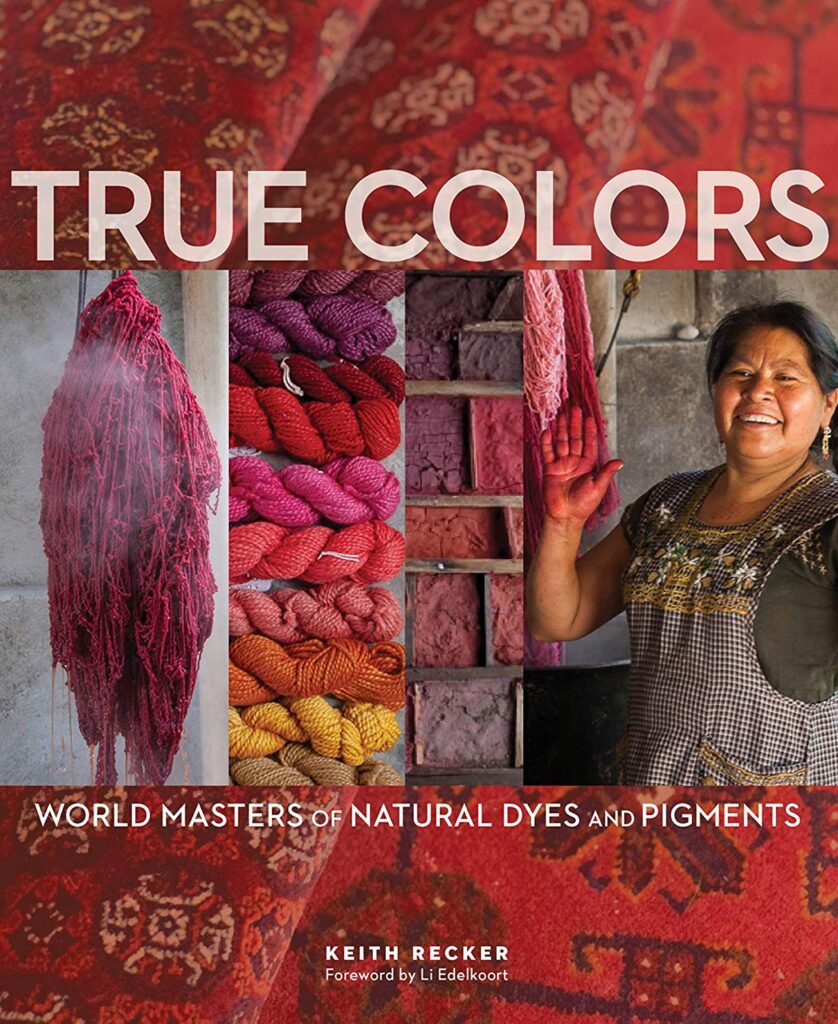Book Title: True Colors – World Masters of Natural Dyes and Pigments
Author: Keith Recker
ISBN: 9781733510851
Daring to ask and daring to understand: the key ingredients that turn a passive customer in an active (activist) participant in our market economy: coining with every question, insight and purchase the world. It is a statement of what the world we want should look like: A small contribution at a time shaping and forming it, step by step, insight by insight, purchase by purchase.
This is the premise under which the author – following the colours of the rainbow – distilled 26 portraits of natural dye artists and artisans into this beautifully illustrated book. Departing from the pleasure that comes with understanding How and Why something was made, his ultimate goal is to contribute to empower the reader become an active, or indeed activist, in his or her demands on the identity and authenticity of ‘things’.
Craft is an extraordinary vehicle to tell stories. Craftsmen and women – many of which breath fresh life into the wisdom, and durable skills of their ancestors, gives this vehicle additional depth, diversity and credibility.
Colour on the other hands, is often the enemy of the longevity, and at the root of disposable trends: in fashion, in design, in construction.
By combining the two worlds – craft and colour – , the author manages to combine and at the same time contrast the value of the moment, the perfectness of the unique one-off outcome, with the decades that the acquisition of mastery needs, the generations linked to learning and using natural resources in adequate ways, and the fundamental changes in economic realities brought on by modern times.
But admiration of skill and craft is never enough unless there is also the factual learning. And even here the book offers insights, that if I heard them before, I certainly never memorised any of the details up to this point.
For one, the diversity of indigo dyes available globally. Just the sheer number of indigo-bearing plants in existence for example is ‘something’: Lonchocarpus cyanescens; Strobilanthes cusia, Polygonum tinctorium, Indigofera tinctoria to just name a few.
Now Indigo alone is of course not the only plant to give blue shades, as there would also be: Isatis tincoria (dyers woad) for example.
And that’s just the blue hues.
A similar exercise could be done for greens, yellows and reds.
Maybe the biggest surprise to me, personally: the Tixinda snail (purpura pansa), which can be found – and is rapidly nearing extinction consequence of environmental changes in its habitat – in Central Oxaca, gives a purple colour. A colour that can take on a mauve shade. In fact a shade that I had always been told only came into textile existence as an accidental result of the very first chemical dyes.
What becomes clear when reading this book: Textile craftsmanship, including that of natural dyeing, at the expertise level presented in this book, used to represent its own system-in-balance. A system that balance the livelihood of people, with natural resources and the human need for beauty on the one hand, and social recognition for expertise on the other.
What becomes equally clear though is, that this system is out of balance in the present. It is increasingly become harder to make a living. The natural resources through no fault of the craftsman themselves, dwindling and deteriorating. And with that the skills are disappearing as the new generation of craftsman does not see a future for themselves, their families and communities.
This book hence, is both: a grand celebration of the beauty of textiles and the resources that nature has given us to achieve exceptional results if diligently managed; and a stark reminder how close to a disaster we are moving as the system is entirely out of balance.


